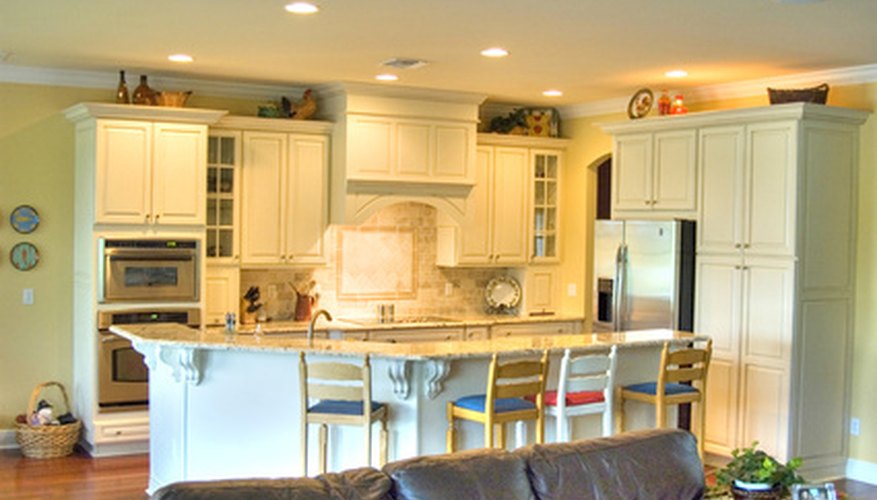MDF is Medium Density Fiberboard. It is a man-made, wood-based solid product manufactured into the shape of boards. Often confused with particleboard, MDF is made from wood pulp fibres as opposed to the wood particles used in particleboard. The wood pulp is mixed with a formaldehyde-based wax resin, which holds it together. MDF boards are used in cabinetry manufacture in place of plywood because of MDF's strength and resistance to warping.
Resistance to Moisture
One of the disadvantages of using MDF instead of plywood is that MDF has not traditionally been as resistant to moisture. All wood and MDF products expand and contract in situations of high humidity or interaction with damp surfaces. In conditions where wood shrinkage is .05 per cent, the MDF shrinkage will be .25 per cent. (A moisture meter can be used to determine the content of the MDF before installation so that the builder can allow for shrinkage or expansion when installed in normal household conditions. MDF usually has moisture content of seven to 10 per cent at the point of its manufacture.)
- One of the disadvantages of using MDF instead of plywood is that MDF has not traditionally been as resistant to moisture.
- A moisture meter can be used to determine the content of the MDF before installation so that the builder can allow for shrinkage or expansion when installed in normal household conditions.
Protection of MDF by Proper Storage
At construction sites, MDF boards should be protected against weather conditions by placing them on pallets and, if possible, by standing them with air flow between each sheet. The sheets should be covered tightly with a canvas or other waterproof tarpaulin.
Protection from Moisture by Coating
A highly durable outer coating of melamine can be applied to MDF boards so that they become more moisture-resistant. Melamine is a hard plastic laminate that is either glued onto the MDF or is thermo-induced in an upgraded process during which the resin in the MDF adheres to the melamine, creating a more reliable veneer. (An added bonus to coating with melamine is that harmful formaldehyde vapours are sealed in and not released into areas where they may be carcinogenic.)
Protection from Moisture by Elevation
An installation tactic used to prevent moisture from contaminating MDF in the case of flood water in garages and cellars is that cabinets are not floor supported but hung from walls, thus elevating them from dangerous wet conditions.
The Future of MDF
Concern about the harmful vapours of urea formaldehyde from MDF board and its lack of resistance to moisture has caused researchers to take action to create a better product. Currently, one of the additives being considered for MDF is chicken feather fibre, which will lessen MDF's absorptive qualities.
